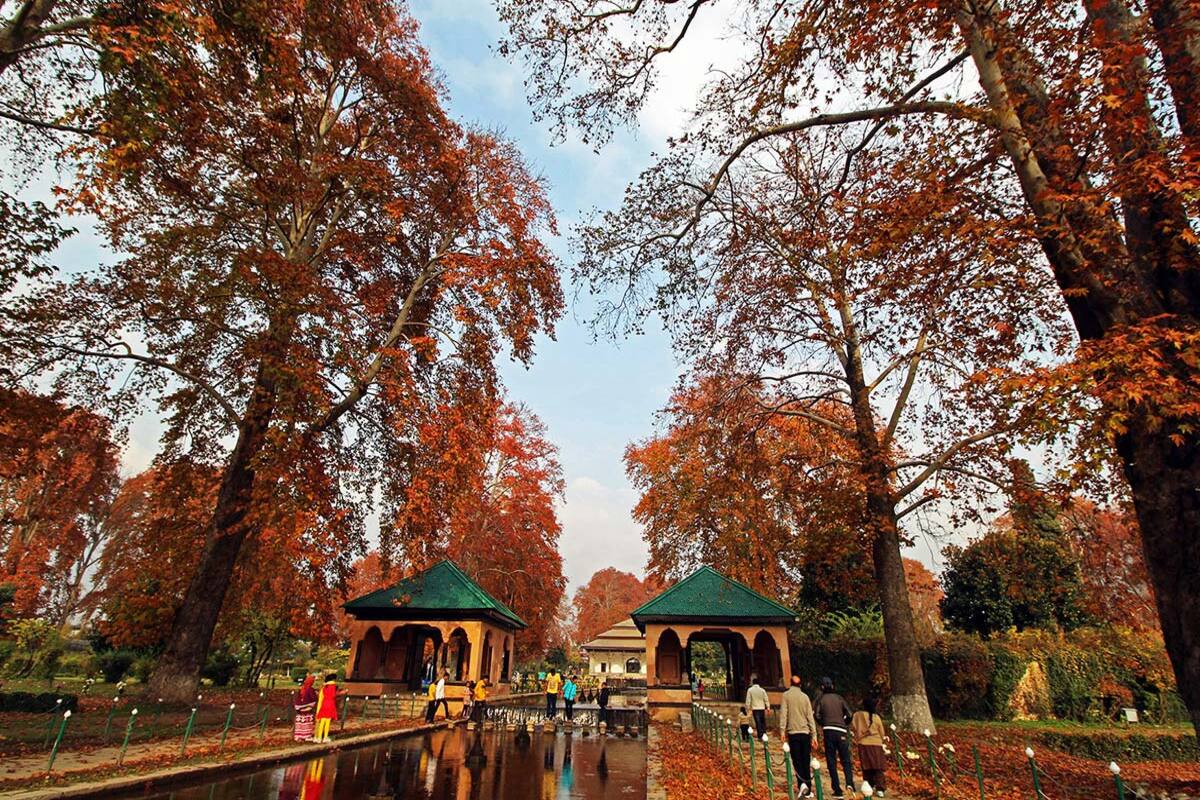With the onset of autumn, colourful Chinar trees, these days, are the main attraction for tourists in the Kashmir Valley. Many of them can be found shooting selfies with the majestic tree in the background.
Chinars across the Valley attract tourists as well as locals during autumn when its leaves turn blood-red, mauve, orange, beige and brown before these eventually fall on the ground during the winters.
The Mughal Gardens on the banks of Dal Lake are attracting tourists who want to witness the hues of Chinar that started changing in the middle of October and have these days acquired bright colours.
Chinar has not only inspired poets but also movie makers. Several popular Bollywood movies have been shot in Kashmir during autumn when Chinar sheds its leaves.
Chinar was brought to Kashmir by the Mughals during the regime of Akbar when he annexed the territory in 1586. The tree takes around 150 years to grow to its full size. Most Chinars in Kashmir are about 300-year-old.
The name Chinar is derived from a Persian word Che-Nar that translates to ‘What a Fire’, as the leaves look during autumn.
Hindus and Muslims equally revere the Chinar tree that is seen around the shrines and temples in the valley.
As per the Floriculture Department, a 627-year-old Chinar tree, considered to be the oldest and biggest, has been found at a garden of a Muslim shrine in central Kashmir at Chattergam in Budgam. The tree is considered the heritage of Kashmir.
Char-Chinari, the small island on the Dal Lake, with four Chinar trees on its corners, was also a tourist attraction, but two of its Chinar trees got diseased and new saplings were to be planted some time ago.
Prominent political leaders of yesteryears also admired the autumn hues of Chinar. Days before her assassination in October 1984, then prime minister, Indira Gandhi, visited Srinagar to witness the falling leaves of Chinar. During her visits, she would surprise the security personnel by quietly moving out to walk on the fallen dry leaves of Chinar along with her close associate and friend Mehmooda Ahmad Ali Shah, who was a well known educationist and principal of the women college.
Chief Minister Sheikh Abdullah titled his autobiography ‘Aatish-e-Chinar’ (Chinar on fire).
A Chinar planted in the warm climatic conditions of Jammu on the campus of the University of Jammu by Professor Amitabh Mattoo, during his term as vice-chancellor, has survived and is slowly growing.
Four Chinar trees were also planted on the roundabout at the entry of the Radio Station building in Jammu by its first Station Director Baldev Prasad Sharma. Chinar trees were later successfully planted also in a park on The Ridge and elsewhere in Shimla.










